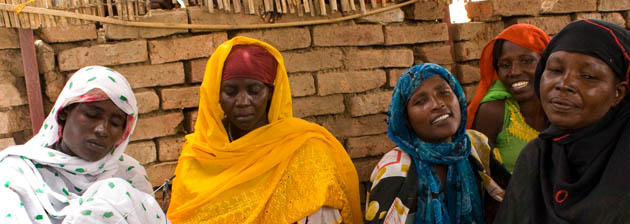Monday, 03 Jun 2013
From Counting Women to Making Women Count
0
0

"Progress towards gender goals requires a long-term commitment to equity, empowerment, continuous monitoring, evaluation and research to inform our understandings of how media development can be best leveraged in pursuit of these goals."
These are the findings of an Internews study, titled From Counting Women to Making Women Count: Focusing on Women in Media Development Programs. The study explored improved gender integration strategies in media assistance programs in the hopes of initiating a dialogue about how media can contribute to broader gender and development goals and improve conditions for women around the world. Through in-depth interviews with Internews country staff around the world and a number of stakeholders, including representatives of the United States Agency for International Development (USAID), the Open Society Foundation (OSF), the World Bank, think tanks, and academic experts, the paper looks at the following questions and issues:
- What does gender integration or gender equality mean and how do these terms apply to media development?
- Does gender matter for media development programs, and, if so, why?
- What are the biggest challenges donors and practitioners face in supporting gender goals through media development?
- What are the best practices or outstanding examples of media development programs or achievements that have helped advance gender goals?
- What are the priorities for gender goals in terms of media-related work?
For more, information, refer to this post by the publication: Media Development
http://www.comminit.com/media-development/content/counting-women-making-women-count-focusing-women-media-development-programs
and link to the full report here:
Web link:
Click here for the 32-page report in PDF format.
Contact Information:
Manisha Aryal - Internews
0
0
From the Data Journalism Blog
Google Fusion Tables: Adding a chart to map information window
Once data has been cleaned and uploaded to Google Fusion Tables, it is important that readers comprehend both the map and the data displayed about each geographical region when selected. A chart is one of the ways used to represent this region-by-region data for the readers. Google Charts make it Read more
Exploring the Use of Google Fusion Tables
Lots of media houses today take advantage of the power of Google in Fusing Tables to create interactive maps of data. It helps web viewers gain insight into information available on the map by fusing a geographical border file and data organized by those same geographical units. Google Fusion Tables Read more
Visualizing data using DataWrapper
DataWrapper is an online tool that helps anyone to create embeddable charts in minutes. The main advantages of using data wrapper are: a) It is easy to use. It saves on time needed to create an embeddable chart. b) User has full control. It is free software. You can choose Read more
Kenya leads decline in Female Genital Mutilation, but victims are younger, mutilation more extreme
Learn About Tableau A new report from UNICEF identifies Kenya among the top two countries, along with Central African Republic, in reducing the prevalence of Female Genital Mutilation (FGM). While Kenya is a leader, the data also reveals that remaining victims are younger, more severely brutalized and isolated to a Read more
Share this page
0
0
|